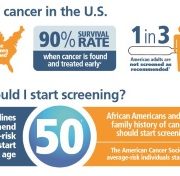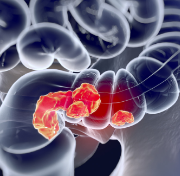Achalasia: A Review of the Condition
Achalasia is a rare condition where the esophagus has trouble moving food and liquid to the stomach. If left untreated, it can become serious. Here’s an overview of the disorder.
Causes and Risk Factors
Achalasia is a very rare disorder. Around 3,000 people are diagnosed each year in the United States. Doctors do not fully understand what causes the condition. A loss of nerve cells in the esophagus can cause achalasia. This could be a result of an infection or autoimmune response. In other very rare cases, an inherited genetic disorder can cause Achalasia. Though it is rare, this condition appears to affect middle-aged and older people the most. Additionally, people with immune disorders are at a higher risk for the disease.
Symptoms of Achalasia
This condition is characterized by a few symptoms. These symptoms tend to appear gradually, worsening over time. They include dysphagia (inability to swallow), heartburn, regurgitation, chest pain, discomfort or pain after eating, coughing, and weight loss. It can cause considerable malnutrition and weight loss over a period of years, and is very serious if left untreated.
Diagnosis
There are a few main tests used to diagnose Achalasia for people with issues swallowing. Doctors can use Esophageal Manometry to measure the muscle contractions in your esophagus during swallowing. It helps determine the force and coordination of your esophagus. This test can determine if you have Achalasia or another condition like Scleroderma. Another available test is an Upper Endoscopy, where your doctor examines your esophagus with an endoscope. They can also biopsy tissue during this test to determine if any other issues are present, like Barrett’s Esophagus. Additionally, doctors can take X-rays of your upper digestive system; in this case, you consume a liquid that coats your esophagus for better imaging of your esophagus. Sometimes, they may have you swallow a barium pill that they then track with an X-ray.
Treatment and Prevention
Treatments for Achalasia involve both managing symptoms and altering esophagus function. Doctors can dilate your esophagus through balloon enteroscopy- they inflate a balloon attached to an endoscope in your esophagus to enlarge the opening. They often need to perform repeat procedures to maintain good dilation. Another treatment involved injecting Botox into the esophageal sphincter to relax the muscle. This option is best for people who are not good candidates for balloon dilation.
There are a few surgical treatments available for severe cases. Heller Myotomy is a minimally-invasive endoscopic procedure that can help. Doctors cut the muscle at the end of the esophageal sphincter. This allows food and liquid to pass into the stomach more effectively. They may also pair this procedure with another called fundoplication. Here, they wrap the top of your stomach over the lower esophagus. This can prevent GERD from developing, which is a potential complication from the Heller Myotomy.
Another potential treatment is POEM (Peroral Endoscopic Myotomy). During this procedure, doctors feed an endoscope into the esophagus and make an incision on the mucosa (lining). Then, they tunnel the endoscope through the mucosa to give access to the muscle below. Doctors then cut and partially remove the now exposed muscle beneath the mucosa. They complete the procedure by closing the incision. POEM helps to relieve tightness in the esophageal sphincter to allow for easier passage of food and liquids.
Our experienced team at GHP has years of experience treating conditions including Achalasia. We can help establish the best plan of care for your situation. Contact any of our office locations to learn about the options we offer and schedule an appointment today.













